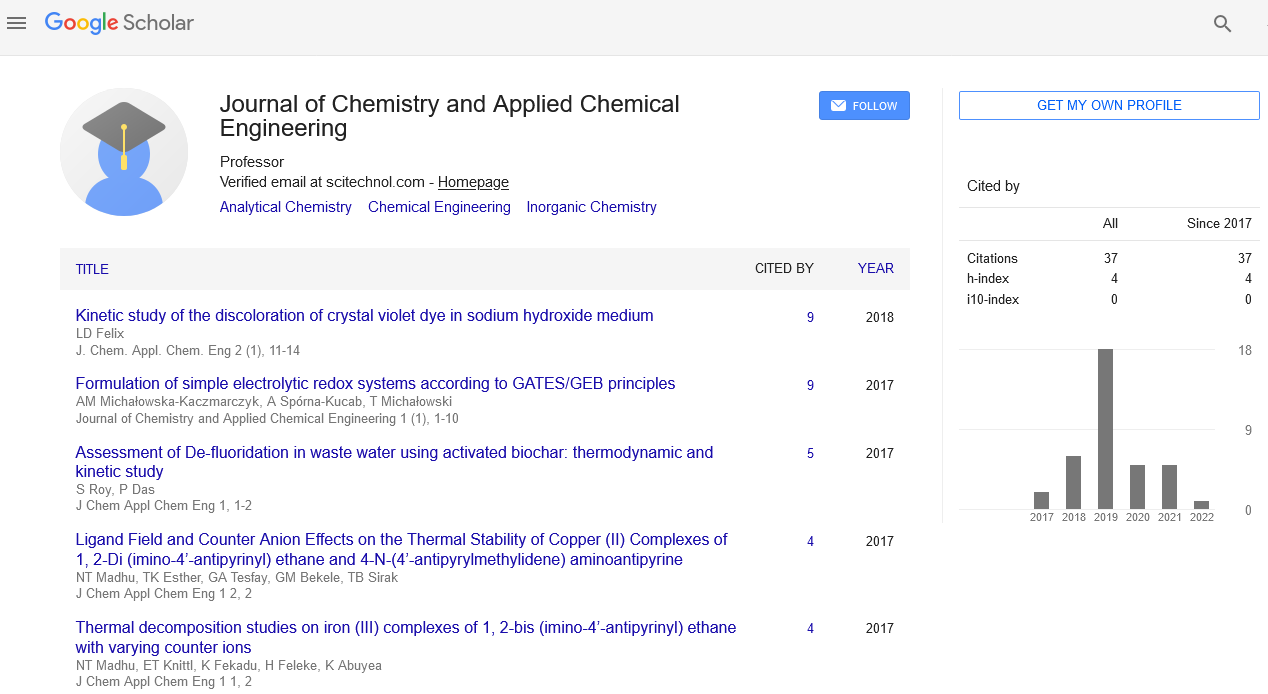Perspective, J Chem Appl Chem Eng Vol: 6 Issue: 2
Bioinspired Actuators with Intrinsic Muscle-Like Mechanical Properties
Lei Ren
Department of Mechanical, Aerospace and Civil Engineering, University of Manchester, Manchester M13 9PL, UK
*Corresponding Author: Dr. Lei Ren, Department of Mechanical, Aerospace and Civil Engineering, University of Manchester, Manchester M13 9PL, UK, E-mail: lei.ren@manchester.ac.uk
Received date: 03 March, 2022, Manuscript No. JCACE-22-56440;
Editor assigned date: 07 March, 2022, PreQC No. JCACE-22-56440 (PQ);
Reviewed date: 10 March, 2022, QC No. JCACE-22-56440;
Revised date: 14 March, 2022, Manuscript No. JCACE-22-56440 (R);
Published date: 23 March, 2022, DOI: 10.4172/Jcace.1000e009
Citation: Ren L (2022) Bioinspired Actuators with Intrinsic Muscle-like Mechanical Properties. J Chem Appl Chem Eng 6:2.
Keywords: Bioinspired robotics, Skeletal muscle , Phenomenological, Parabolic pressure-period
Introduction
Humans and animals can attain agile and green moves due to the fact the muscle can function in specific modes relying on its intrinsic mechanical residences. For bioinspired robotics and prosthetics, it's far tremendously proper to have synthetic actuators with muscle-like residences. However, it nevertheless stays a project to comprehend each intrinsic muscle-like pressure-pace and pressure-period residences in a single unmarried actuator concurrently. This look at offers a bioinspired gentle actuator, named HimiSK (tremendously imitating skeletal muscle), designed through spatially arranging a hard and fast of synergistically contractile gadgets in a bendy matrix much like skeletal musculature. We have verified that the actuator offers each intrinsic pressure-pace and pressure-period traits which are very near organic muscle with inherent self-balance and robustness in reaction to outside perturbations. These great residences end result from the bioinspired structure and the adaptive morphing of the bendy matrix material, which adapts robotically to robotically various duties without reliance on sensors and controllers.
Biotechnology
The skeletal muscle is a powerful, bendy, and flexible actuator. Humans and animals can attain agile, adaptable, and green moves due to the fact the muscle can function in specific modes relying on its intrinsic mechanical residences and morphological structures. Over the beyond decades, a whole lot of actuator strategies were advanced to imitate skeletal muscle groups the use of substances that alternate size in reaction to thermal, electrical, chemical, or optical stimulations. Most of that research had been targeted on growing the output stress, strain, or energy/electricity density of the actuators, while little research aimed to assemble actuators with muscle-like mechanical traits, e.g., pressure-pace and pressure-period residences. The contraction mechanics of the skeletal muscle has been measured and recorded in severa muscle experiments. To interpret the results, Hill proposed a phenomenological version to explain the pressure-pace and pressure-period dependencies of muscle pressure (. For the pressure-pace relation, he determined that the muscle pressure decreases with growing muscle shortening pace in a hyperbolic shape, which favors pace output for the duration of low hundreds and pressure output in opposition to excessive hundreds. In addition, muscle pressure indicates a parabolic pressure-period dating with muscle period for the duration of an isometric contraction, in which most isometric pressure is generated at resting period. The pressure-pace and pressure-period family members are great intrinsic residences of the skeletal muscle. It has been verified that the pressure-pace relation performs an important function for the stabilization of human arm motion, human periodic hopping, and explosive jumping. Moreover, the pressure-pace and pressure-period family members were proven to offer intrinsic comments manipulate of muscle pressure and paintings whilst animals stumble upon sudden perturbations or require fast adjustment for the duration of locomotion. From a robotics and prosthetics factor of view, it might be proper to have an synthetic actuator with comparable intrinsic residences.
The McKibben pneumatic synthetic muscle, advanced withinside the Nineteen Fifties for limb rehabilitation, is likely the primary try to assemble biomechanically practical actuators. When being pressurized, the McKibben muscle contracts axially just like the skeletal muscle because of anisotropic inflation. Unlike a organic muscle, it usually offers a concave parabolic pressure-period relation in preference to a convex shape, and additionally can't be stretched past the resting period. In addition, its pressure-pace relation differs from that of muscle, in which pressure does now no longer lower with growing shortening pace. Fabricated a miniature McKibben actuator through silicone rubber. It is ready 20mm in period and 1.zero mm in outer diameter with the output pressure approximately 234mN and stress approximately 10.5% through making use of pneumatic strain of zero.6Mpa. Kurumaya et al. fabricated a skinny McKibben muscle (outer diameter 1.eight mm), that may shape a multifilament actuator in step with muscle form. Multifilament actuator output pressure will increase in share to the quantity of skinny McKibben muscle groups. Its most contraction strain is ready zero.30 MPa and most contraction ratio is 25–30%; the proposed musculoskeletal robotic achieves humanlike motions through the use of those multifilament actuators. They all finished the simple studies of a miniature McKibben actuator. However, the intrinsic mechanical belongings became now no longer reported. To broaden a greater muscle-like actuator, built a mechanical device with separate hydraulic dampers appearing in parallel with a bendy pneumatic muscle. Muscle-like parabolic pressure-pace traits had been finished, however the pressure-period overall performance remained similar to the McKibben muscle. A new form of pneumatic synthetic muscle restrained through immediately fiber bundles became proposed. This surely designed actuator indicates pressure-pace belongings much like that of human muscle, however can't paintings past the resting period. Schmitt et al. advanced a mechanical platform that correctly reproduced the muscle-like hyperbolic pressure-pace dependency. The device includes DC motors, encoders, and one spring in preference to a unmarried actuator. Recently, a knitted-sleeve fluidic synthetic muscle became proposed as an opportunity to the McKibben muscle. It indicates a convex parabolic pressure-period relation much like skeletal muscle and may be stretched past the resting period. However, the pressure-pace belongings became now no longer reported. It nevertheless stays a project to comprehend each pressure-pace and pressure-period residences of skeletal muscle in a single unmarried actuator concurrently.
 Spanish
Spanish  Chinese
Chinese  Russian
Russian  German
German  French
French  Japanese
Japanese  Portuguese
Portuguese  Hindi
Hindi 